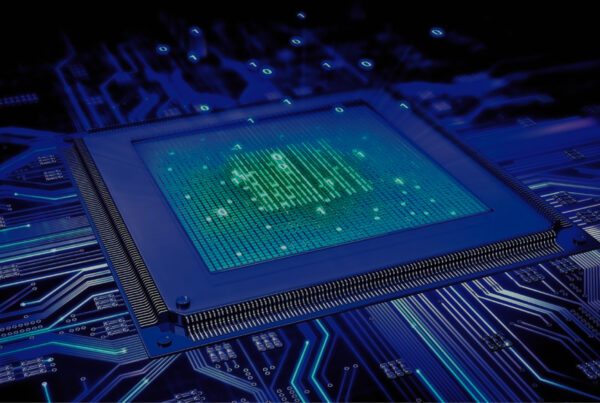In the rapidly evolving landscape of semiconductor technology, the relentless pursuit of improved performance, reduced power consumption, and cost efficiency has driven innovative methodologies in design and manufacturing. One such groundbreaking approach to reshaping the future of the industry is the adoption of chiplets. This modular design strategy is setting new standards in flexibility, efficiency, and scalability, making it a cornerstone of modern semiconductor engineering.
Understanding Chiplets
The semiconductor device is, by tradition, a monolithic SoC. This integrates vast amounts of functionality into a giant single silicon die. This has, in practice, posed some problems with scalability, yield, and flexibility. Chiplets offer an attractive alternative here. The SoC is broken up into functional modules called chipsets, which are developed and manufactured separately. Each is optimized for specific jobs and then combined into an integrated package, leveraging advances in interconnect technologies.
Get in touch
This modular architecture allows semiconductor designers to transcend the limitations inherent in monolithic designs, opening the way for innovations in performance and cost management. As this paradigm gains traction, it is revolutionizing how semiconductor design companies approach the creation of next-generation chips.
Advantages of the Chiplet Approach

1. Design Flexibility and Customization
Chiplets’ modularity allows designers to mix and match various components to better fit solutions into specific application requirements. A company can pair a high-performance central processing unit or CPU chipset with a graphics processing unit or memory chiplets that are optimized for gaming, artificial intelligence, or data analytics applications. This greatly reduces the overhead of designing custom solutions and thereby makes it easier to respond to shifting technological demands.
2. Cost Effectiveness
The process of creating smaller dies allows for a much lower number of potential defects to be produced with high yields and, therefore, savings. The modular approach fosters the reuse of successful chiplet designs in multiple products. This also amortizes the cost of development across a larger base of applications, which is one major reason top semiconductor companies make the shift.
3. Performance Optimisation
Chiplets can be manufactured with various process nodes optimized for their specific functions, such as logic, memory, or analog components. This heterogeneous integration enables performance gains that are hard to realize in monolithic designs. For example, a 5nm node can be used for high-speed logic, while a more cost-effective 14nm node can be used for peripheral functions to maximize both performance and cost-effectiveness.
4. Accelerated Time-to-Market
Chiplets can significantly shorten development cycles if pre-designed and pre-verified. Companies can create chiplets as building blocks, which reduces complexity in the process of making new chips from scratch. This modularity will enable semiconductor engineering teams to respond quickly to market requirements and technological developments.
5. Environmental Impact
Chiplets can also make them environmentally friendly. This makes a smaller die not only contribute to more massive yields during manufacturing but also diminishes the waste of material involved in the manufacturing process. It further reduces the full implementation of manufacturing cycles for totally new designs, thus aiding the greening of semiconductor practices. This approach is a very fitting move toward making technology development, a major concern of people globally, have a face with green.
Chiplet Integration Issues
Despite the numerous advantages chiplet-based designs come with, several new challenges also arise that need to be addressed. They include;
1. Interconnect Standardization
There is a need for communication between the various chiplets so they can interact efficiently. Robust interconnect technologies together with upcoming standards like Universal Chiplet Interconnect Express (UCIe), can be adopted to accomplish this seamlessly. This means that it has to reach an interoperable level necessary for establishing a system that allows the effective integration of chiplets coming from any vendor.
2. Thermal Management
The integration of multiple chiplets together at close proximity leads to considerable heating and requires advanced thermal management techniques. Engineers have to invent new cooling strategies in order to maintain optimal performance and reliability.
3. Testing and Verification
The testing of chiplet-based systems is challenging due to an increased number of interfaces and interconnections. Comprehensive verification methodologies need to be developed in order to ensure the functionality and reliability of the final product.
Industry Adoption and Future Outlook
The chiplet paradigm is fast gaining acceptance in semiconductor design companies. Industry leaders such as AMD, Intel, and TSMC are investing significant amounts into this approach while using its advantages to push the boundaries of chip performance and efficiency. Open standards and collaborative ecosystems are emerging, fostering interoperability and accelerating innovation.
As the technology matures, chiplets would be driving innovation in a wide-ranging application, from AI to machine learning, 5G networks, and high-performance computing. For semiconductor engineering teams, mastering the intricacies of chiplet integration will be the key to staying competitive within this dynamic field.
Tessolve: A Partner in Semiconductor Innovation
At Tessolve, we are at the forefront of this transformative time, fighting for innovation with semiconductor design services. Our motto is to deliver end-to-end solutions that could redefine what is possible when it comes to chip developments, enabling clients to embrace a modern level of semiconductor technologies with great confidence.
Our comprehensive expertise includes chip design, advanced testing capabilities, and embedded systems. Using leading-edge methodologies and robust validation processes, we ensure that our clients achieve superior performance, cost efficiency, and reduced time-to-market. By focusing on chiplets and other emerging technologies, we help businesses unlock unparalleled flexibility and scalability in their products.
Working very closely with industry leaders, the trust they place in us enables the development of modular, future-ready designs. Excellence as a core and customer-centricity has positioned Tessolve as one of the leaders in shaping the semiconductor wave of tomorrow. Help your business navigate through the waves and tides of semiconductor challenges in competitive market waters with Tessolve.
Also Read: The Future of Semiconductor Design: How Emerging Technologies Are Shaping the Industry
Let’s Conclude
Chiplet-based architectures are a very significant evolution in semiconductor design, bringing modularity that addresses scalability, performance, and cost challenges. In the innovation of the industry, embracing this paradigm will be necessary for companies looking to maintain a competitive edge in this dynamic world of technology.
Anyone keen on charting this new frontier would find invaluable allies in industry leaders like Tessolve. A leading-edge semiconductor design services provider with a proven record of excellence, Tessolve has what it takes to emerge as an important player in charting the future of innovation within the semiconductor world.





